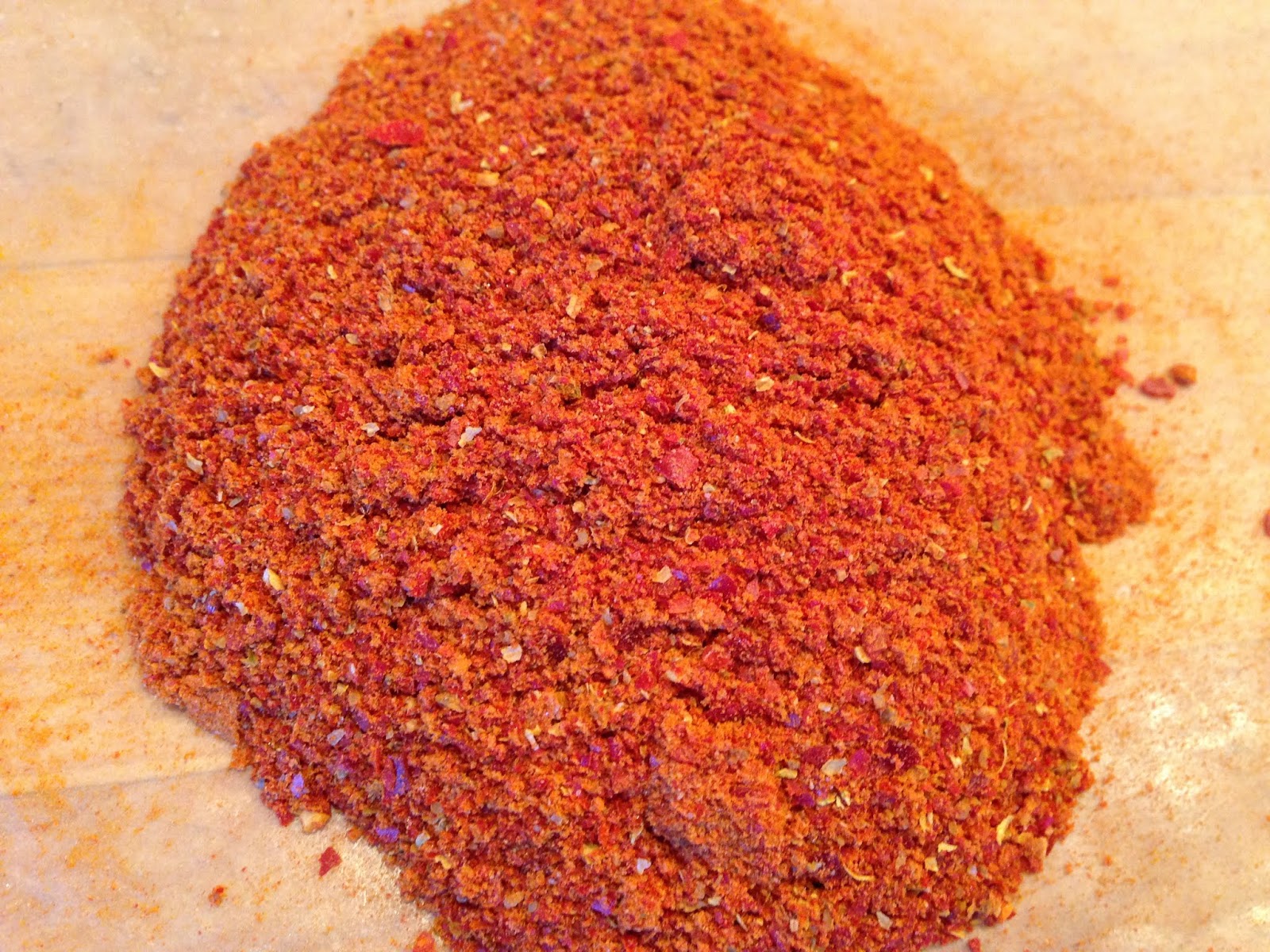Dave and I were in Chile earlier this year hiking in Torres del Paine National Park. Every evening, whether we were dining in the dining room at the EcoCamp or dining in one of the refugios along The Circuit, there was a bowl of Merkén (or Merquén) to be found on the table. Merkén is a chile pepper blend made by the indigenous Maupche tribe for ages but which has recently become a popular seasoning enjoyed throughout Chile. I found myself requesting it every morning to spice up the bland scrambled eggs that we were served to fuel us for the day's hike. Scrambled eggs are not one of my favorite things, but with a dash of Merkén and a slice of cheese on top of the usually blah toast, breakfast became something more than just fuel for the trail.
Unfortunately we spent all of our time in Chile in the park so there wasn't an opportunity to shop and stock up on a stash of Merkén to take home. When I got home I did a bit of research, which started with trying to figure out what the name of the spice blend is. That took a bit of rooting around on the web but I finally found what I was looking for. Merkén is made in two basic formulations, natural - which is just ground chiles and salt, or especial - which is ground chiles with salt and coriander seeds and sometimes cumin and oregano, and sometimes other ingredients like bay and garlic.
What really makes Merkén unique is the chile peppers and how they are prepared. Aji Cacho de Cabra (Goat Horn Peppers) are the peppers grown by the Mapuche. The peppers are harvested green, allowed to ripen, then sundried, and then finally smoked over a wood fire. I wanted to make my own version of Merkén, it would certainly not be authentic, but I craved that same lovely flavor of sweet spicy salty peppers and sweet and earthy spices. The Wikipedia article on Merkén says that the typical ratios for the especial mix are 70% peppers, 20% salt, and 10% coriander seed. And then I recently found a couple of Merkén recipes in Maricel Presilla's book Gran Cocina Latina, where she recommends using dried New Mexico chiles. I have loads of dried New Mexico chiles that I dried from my grand chile growing experiment last year. Maricel recommends using hot Spanish pimentón to lend spice and smoke to the blend, but I decided to us smoked sea salt instead. And to get the spice into the mix I used a mix of dried mild New Mexico chiles and dried Aleppo peppers (also from my garden). The result is fabulous.
I used very small quantities for my experimental batch, but I'm actually thinking that small is the way to go because the mix will lose it aroma quite quickly if it sits around - fresh is best. I also used my digitial scale which allows metric measurements, grams are so much more precise when working with small quantities.
Faux Merkén
17 g. dried seeded Zia Pueblo peppers (or any mild New Mexico type pepper)
4 g. dried seedless Aleppo peppers (or dried cayenne peppers)
6 g. smoked sea salt (Salish is good)
3 g. dried green coriander seeds
If the peppers are leathery they need to be crisped to grind properly, I placed mine on a baking sheet and put them in a 350º degree oven and then turned the heat off and let the peppers sit in the oven a few minutes, then removed them from the oven and let them cool on the baking sheet. They can also be toasted in a skillet or on a flat griddle, press the peppers onto the hot surface with a metal spatula until they are dry and slightly charred. I find it easy to burn the peppers with the griddle method so I dry mine in the oven.
Grind the salt and coriander seed together in a spice mill (coffee grinder) until fairly finely textured. Crumble the peppers into the mill and grind the mixture to whatever consistency you desire. I like it to be between fine and coarse, with pepper flakes and pieces of coriander still visible.
The mix is great on eggs, or used as a spice rub, sprinkled on vegetables, meat, fish, poultry, tossed with roasted nuts, or sprinkled on cheese. Hmm, it might even be good on a nice cold slice of melon. Cucumbers, tomatoes, and Merkén. A dash of Merkén on hummus. Merkén and chocolate? What might it not be good on?
About This Blog
This is, as the title indicates, my kitchen notebook (the header is actually a scanned image of the cover of a notebook that I started using about 25 years ago and the background is a stained page from that book). I am not a professional recipe writer. If you try any recipe here, please keep that in mind, these recipes have not been tested by an independent tester. The "recipes" are often not even really recipes but rather a list of ingredients that I've noted after preparing a dish on the fly that I thought came out well. Perhaps I've also added some instructions, but I rarely keep accurate track of what I've done in terms of time or temperature, I've just noted to the best of my memory (feeble) what I did.
Please feel free to take some inspiration from here, but on the other hand, please give credit where it is due. I also welcome any constructive comments that you might have if you are inspired to try a recipe. Questions are welcome, but keep in mind that I may not remember specifics. The dishes do evolve over time...
Thank you and enjoy!


No comments:
Post a Comment
Thanks for your comments!